Spring Quarter 2025
Course Instructors: Gus Wendel, Claire Nelischer, Doğa Tekin
Community Advisors: Melissa Acedera (Polo's Pantry/Peace and Healing Center), Grant Sunoo (Little Tokyo Services Center)
Course Collaborators: Nidia Bautista, Dana Cuff, Marlené Nancy Lopez, Grace Hong, Heather Seybolt
Students: UHI 2024-25 Cohort
For the 2025 Urban Humanities Spring Capstone, students presented final projects as part of an exhibition culminating a year of community-engaged research and interdisciplinary exploration based in Downtown LA. Framed by the speculative concept of a People’s Library, the exhibition re-envisioned the form and function of the archive not only as a repository of past events, but also as a resource for the present and a projective vision for the future of the commons.
Through partnerships with three downtown community organizations–Little Tokyo Services Center, Polo’s Pantry, and the Peace and Healing Center–16 graduate students integrated creative, archival, and place-based approaches to examine a range of themes including civicness, public space, mutual aid, food justice, and arts activism. In doing so, the students extended lines of inquiry established throughout the academic year, drawing on urban humanities practices including thick mapping, sound scavenging, sonic production, and filmic sensing.
At the heart of these investigations are a set of generative questions: What could or should a People’s Library for Downtown Los Angeles do? How would it be structured, and what would belong in its collection? Who would access it, and how? These questions guided the students’ projects as they reimagined the library and its archival contents not just as a site of memory, but as a living resource for solidarity, reflection, and collective action. Each project, or “thick installation,” invites us to reconsider our relationship to place, knowledge, and each other–foregrounding futures built on equity, care, and community.
The projects revisit a perennial question in urban humanities: What does it mean to intervene? In this course, we ask how knowledge production might extend beyond texts and into the sites and communities from which such knowledge emerges. Through localized, collaborative, and interdisciplinary practices, these student-led and community-guided projects embody acts of thinking and making that are self-reflexive interventions in their own right.
(pre)Serving Community: Peace and Healing Through Art and Activism
Jordan Wynne, Brandt Rentel, Ana Arreguin Gómez, Travis Raser, Jorge Alvarado


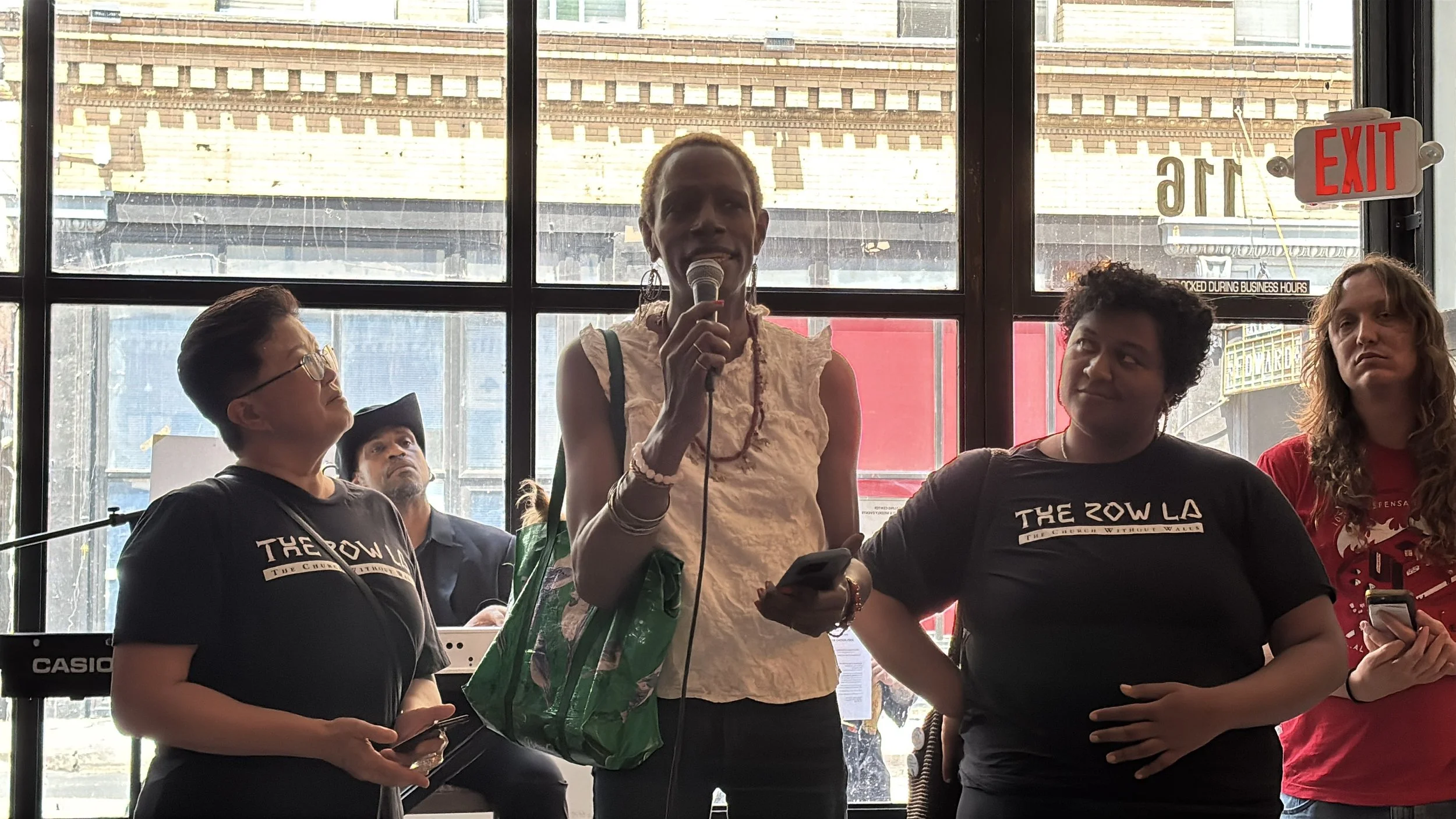

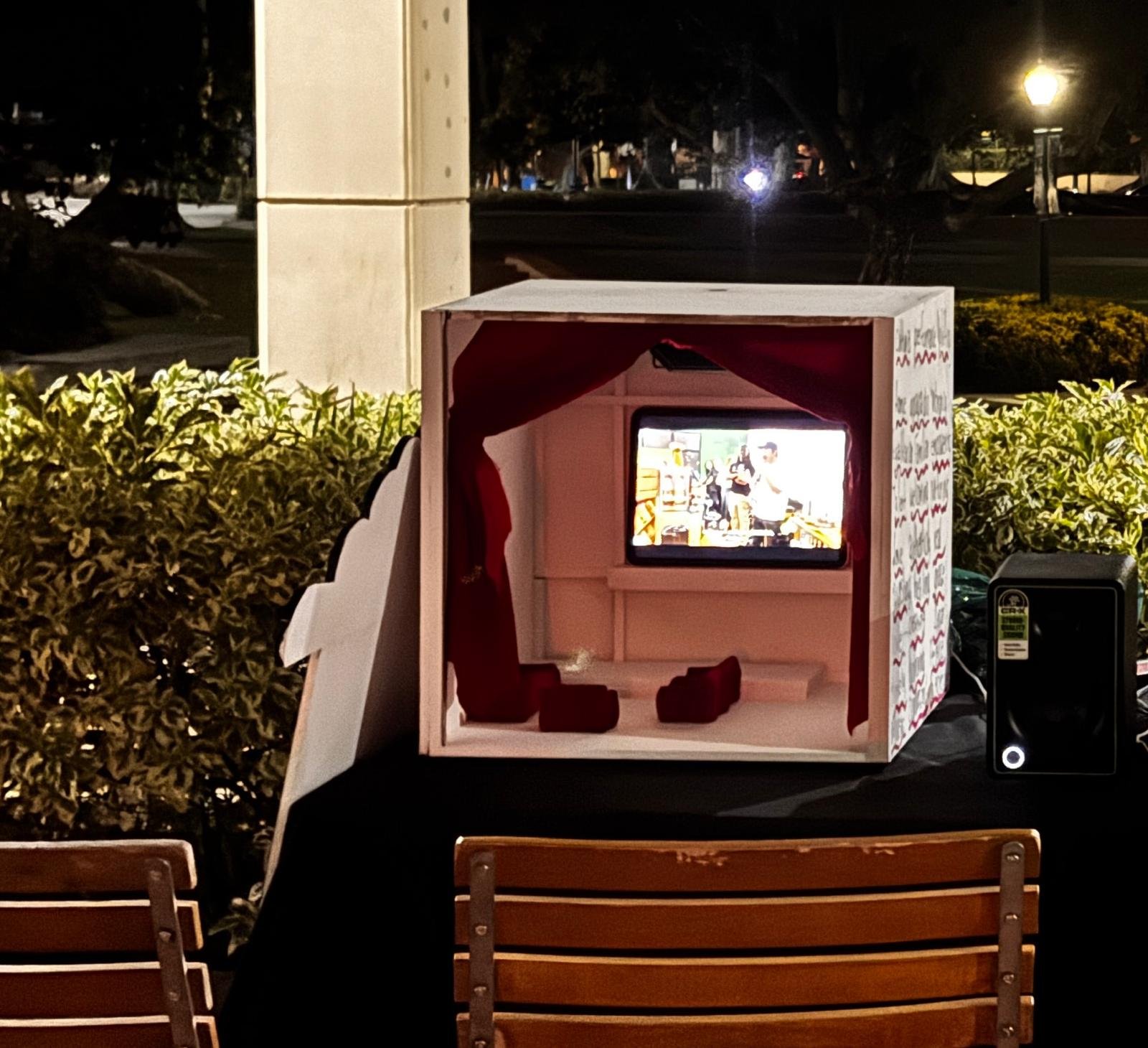
Our archive acknowledges the traditional forms of archiving, but we challenge how art in activism and social movements are represented, and what happens to their ephemeral essence that can only be experienced in the moment. Amidst the formal commercial art spaces of Downtown Los Angeles are smaller community activist spaces that use artistic practice to build mutual understanding around social change. Arts invite participation, but also require participants. This makes visibility the crux of survival for art spaces in Downtown. Social movements have lived and died on the participation of the public, and are victims of suppression by hegemonic forces. We take a critical role in the appraisal of our archive, dealing directly with what we and our audience “consciously exclude, marginalize, ignore, destroy” (Cook 2011, pg 174). As a “dominant archival institution” (Tai et al. 2019, pg 4) UCLA is endowed with billions of dollars and actively profiting from oppressive structures like the military-industrial complex and for-profit corporate development.
Our installation takes inspiration from the open mic dynamic of the Peace & Healing Center and the impact and meaning this space has for the community in light of the socio-spatial histories of Skid Row and Downtown Los Angeles. The history of Skid Row is one of constriction, where simple joys of public expression and artistry are disappearing as rapidly as public spaces. The commodification of space in downtown has also manifested as a commodification of expression, where artistry is only allowed in formal, private, and purchased spaces. The Peace and Healing Center confronts this directly, offering an artistic community space that defies erasure and empowers the voices of marginalized communities. To embody this, we reflect the multigenerational community spirit of the space through marquee-box emulating the welcoming space of the Peace and Healing Center. The stage and sensory elements of our marquee allow visitors who have not yet had the chance to be a part of the space to experiencing the comforting community aspects of the space. This marquee box serves as a commemoration of the space as it is today, inspiring visions of the future as community leaders envision larger spaces for performance and expression in Skid Row and across Downtown. Above the stage area, we have on display a short-film that serves as a visual and sonic archive of the space, giving a window into the ephemeral, fleeting performances that can usually only be experienced in person. The audience interacts with the marquee-box by placing their head inside of the box, thereby immersing themselves in the ambience of the space that has been recreated within the box. Accompanying this miniature performance is a Playbill that allows the audience member insights into the personal inspirations of the many warm and inspired souls that make up the space. We invite audience members if they feel so inclined to participate in our live open mic. Voices and empowering quotes are overlaid on DJ’d audio that offers another venue of transportation into the space, encouraging the audience to use their own voice and request to sing, speak, recite poetry, or otherwise express the artistic potential of the moment.
“The World is in Los Angeles”: Archiving an Urban Heart
Cora Johnson-Grau, Remi Messier, Emma Spies, Xujun Xu





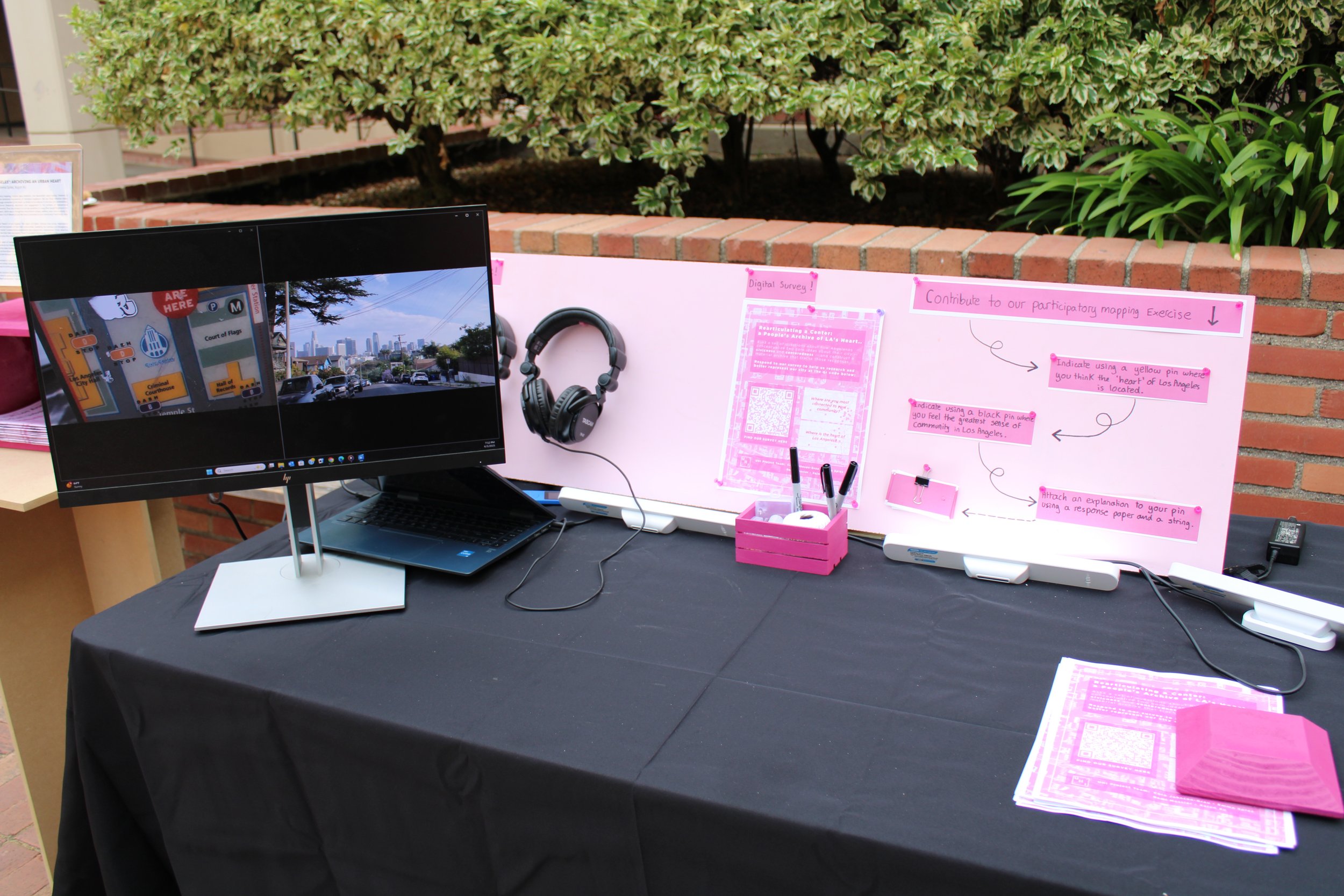
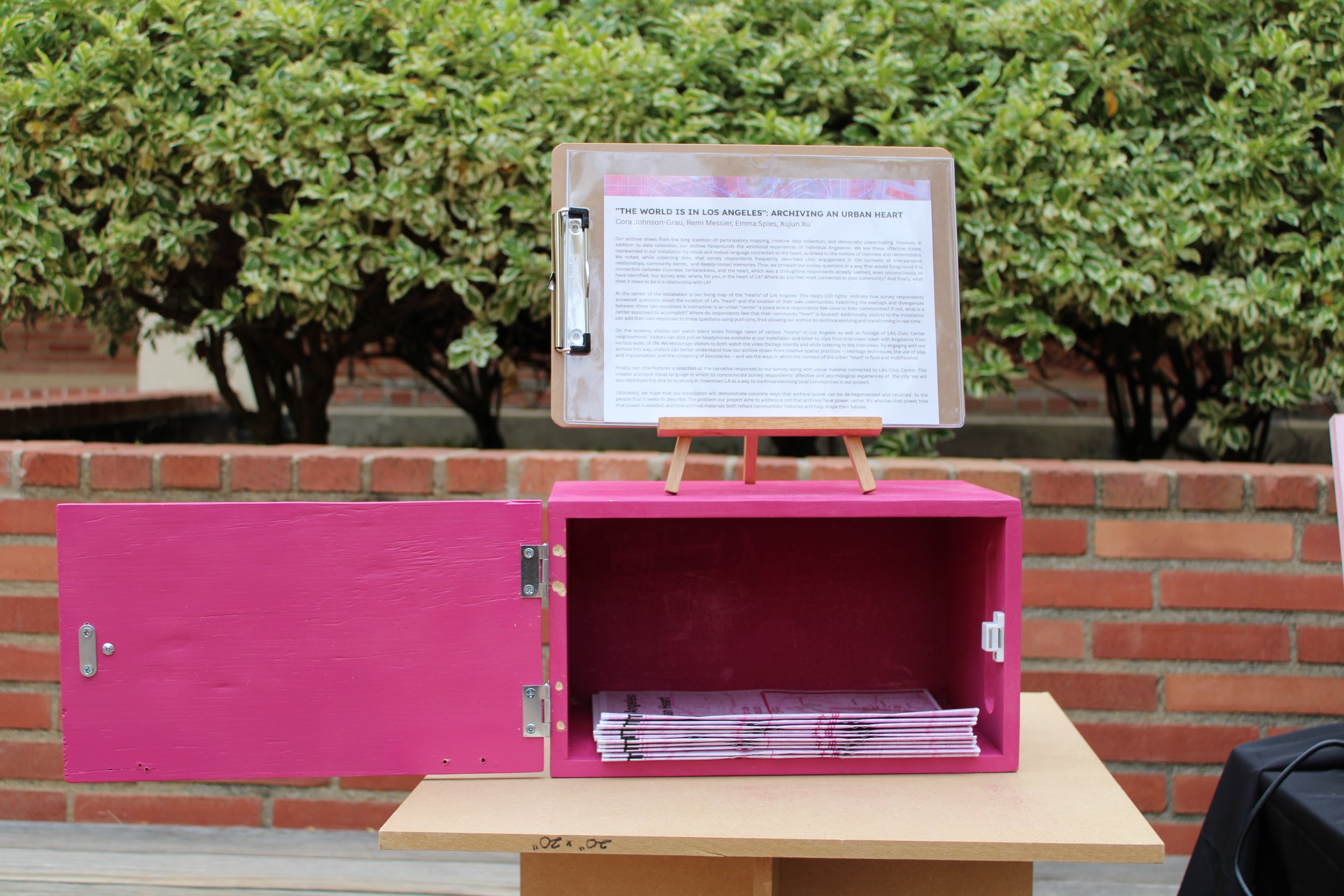
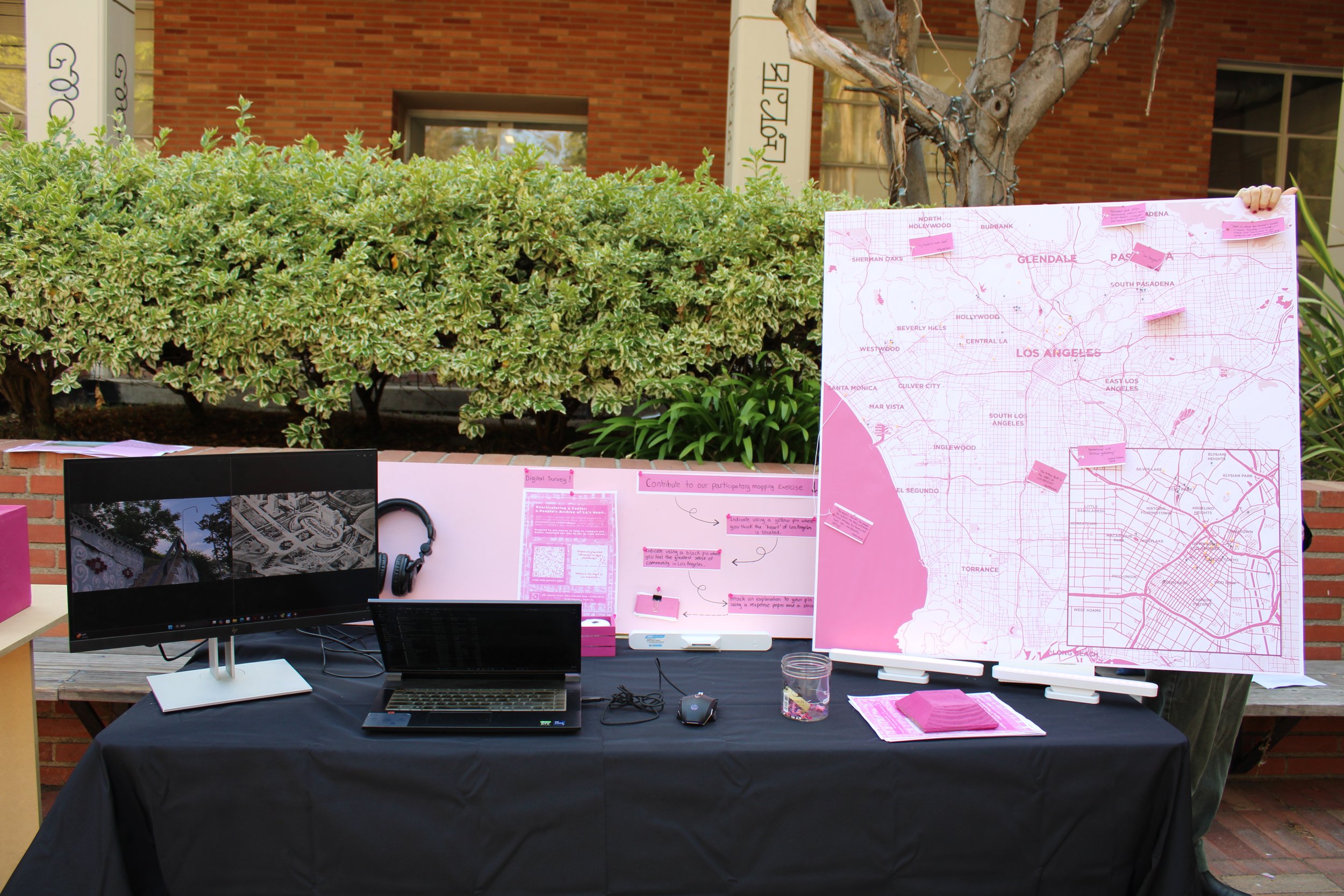
Our archive draws from the long tradition of participatory mapping, creative data collection, and democratic place-making. However, in addition to data collection, our archive foregrounds the emotional experiences of individual Angelenos. We see these affective states, represented in our installation by visual and textual language connected to the heart, as linked to the notions of civicness and centeredness. We noted, while collecting data, that survey respondents frequently described civic engagement in the contexts of interpersonal relationships, community bonds, and deeply-rooted memories. Thus, we phrased our survey questions in a way that would foreground this connection between civicness, centeredness, and the heart, which was a throughline respondents already seemed, even unconsciously, to have identified. Our survey asks: where, for you, in the heart of LA? Where do you feel most connected to your community? And finally, what does it mean to be in a relationship with LA?
At the center of the installation is our living map of the "hearts" of Los Angeles. This map's LED lights indicate how survey respondents answered questions about the location of LA's "heart" and the location of their own communities. Examining the overlaps and divergences between these two responses is instructive: is an urban "center" a place where respondents feel close to their communities? If not, what is a center supposed to accomplish? Where do respondents feel that their community "heart" is located? Additionally, visitors to the installation can add their own responses to these questions using push pins, thus allowing our archive to continue evolving and transforming in real time.
On the screens, visitors can watch silent video footage taken of various "hearts" in Los Angeles as well as footage of LA's Civic Center neighborhood. Visitors can also put on headphones available at our installation and listen to clips from interviews taken with Angelenos from various walks of life. We encourage visitors to both watch the video footage silently and while listening to the interviews. By engaging with our archive this way, visitors can better understand how our archive draws from creative spatial practices — montage techniques, the use of play and improvisation, and the collapsing of boundaries — and see the ways in which the concept of the urban "heart" is fluid and multifaceted.
Finally, our zine features a selection of the narrative responses to our survey along with visual material connected to LA's Civic Center. This creates a unique visual language in which to communicate survey respondents' affective and psychological experiences of the city. We will also distribute the zine to locations in Downtown LA as a way to continue involving local communities in our project.
Ultimately, we hope that our installation will demonstrate concrete ways that archival power can be de-hegemonized and returned to the people that it seeks to describe. The problem our project aims to address is not that archives have power; rather, it's who has that power, how that power is wielded, and how archival materials both reflect communities' histories and help shape their futures.
Anecdote of a Chair
Sydney Patterson, Hollis Potts, Carl de Joya, Ames Cassell Loji




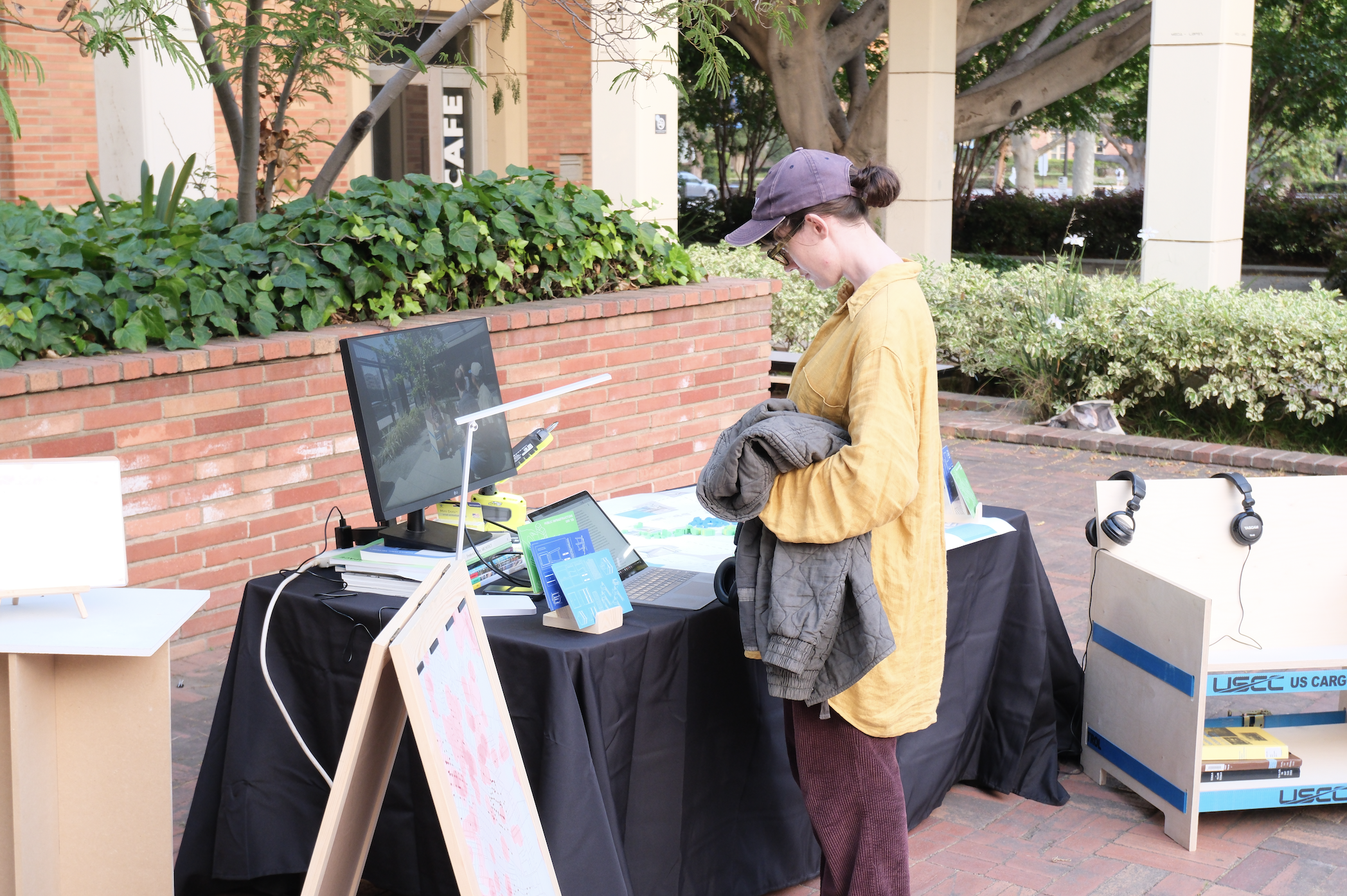
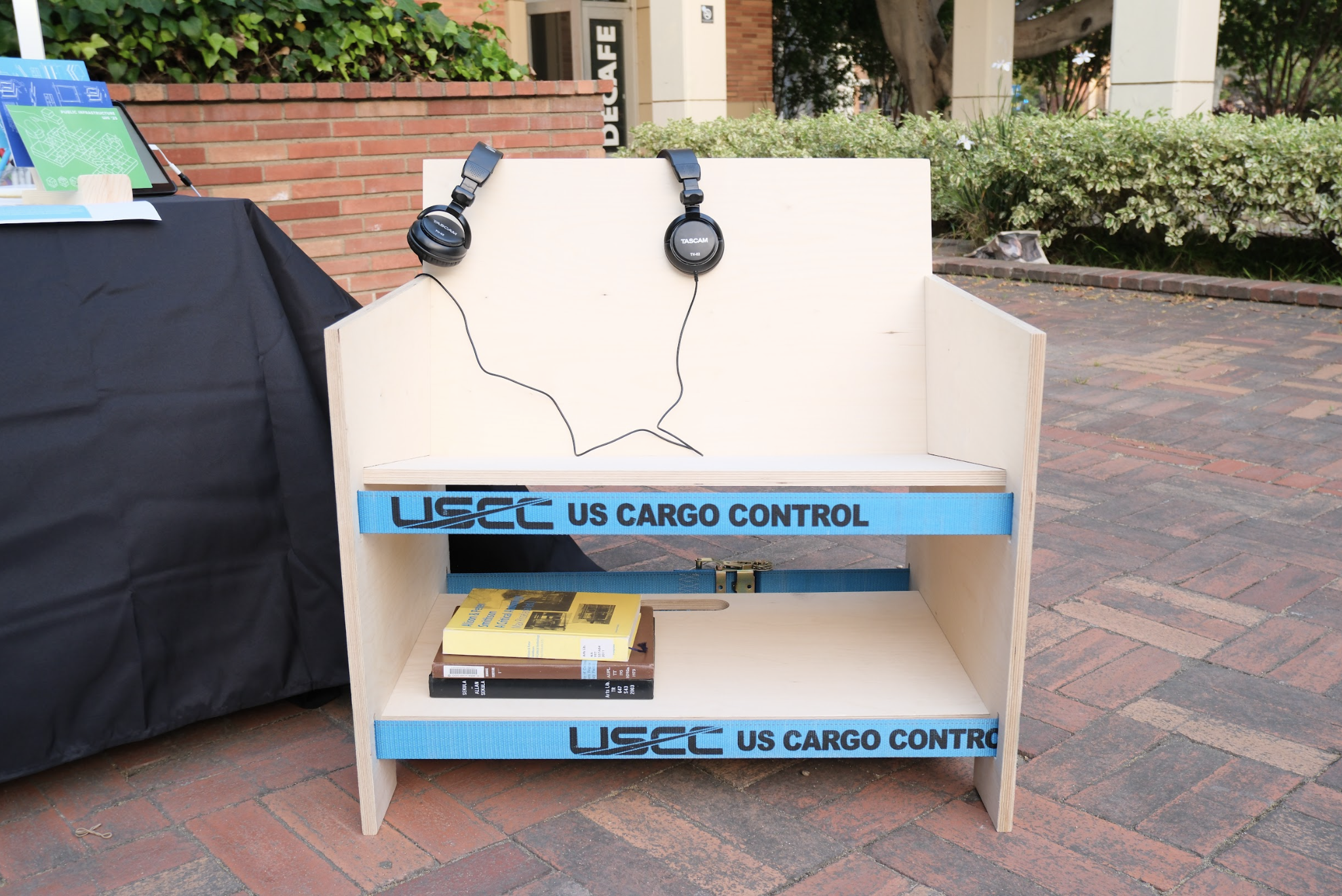
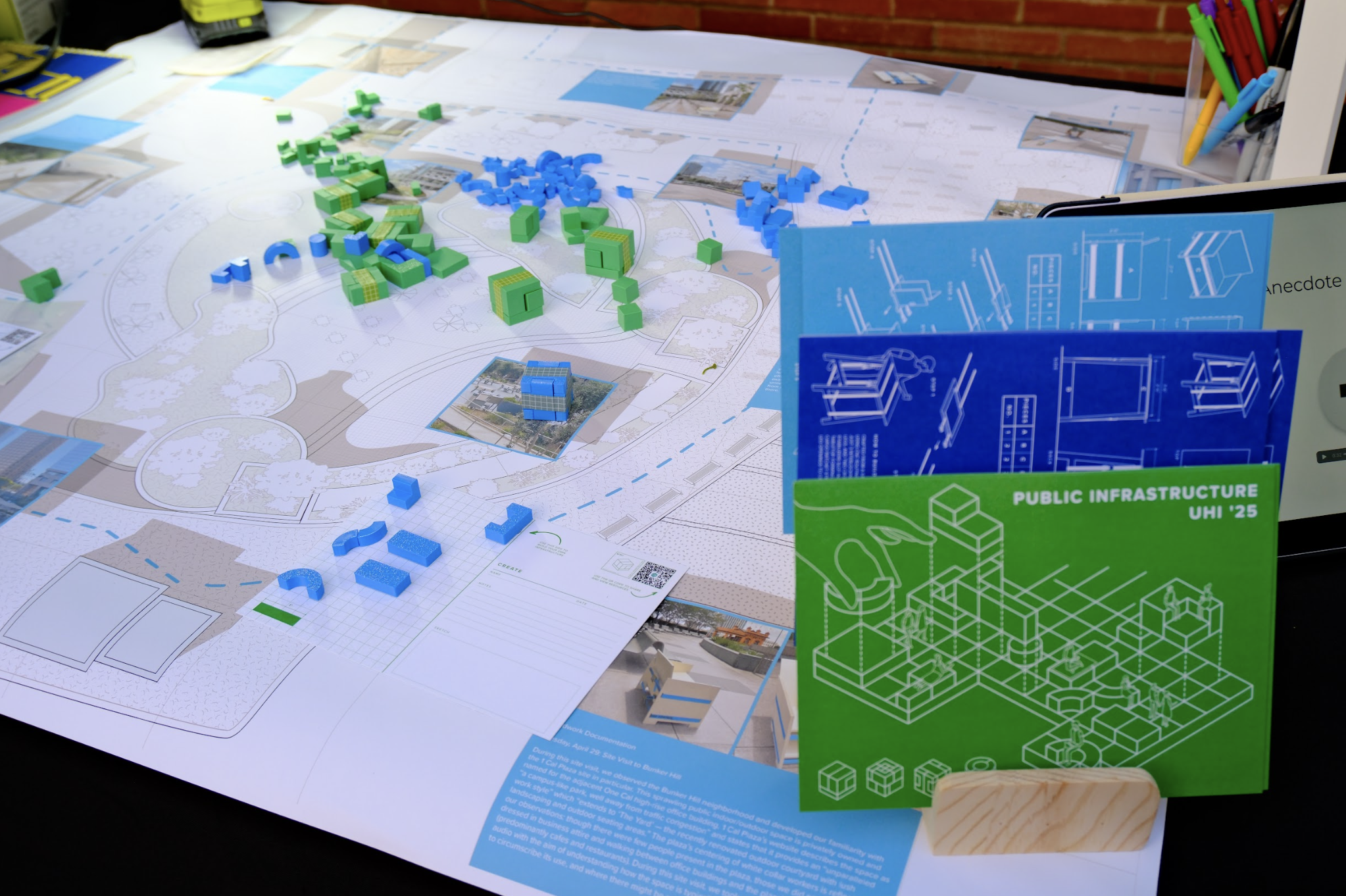
Downtown Los Angeles is a web of estranging spaces: empty plazas, shadeless parks, benches and ledges pockmarked with design elements intended to make people go away. Our project asks: how might communities spontaneously and subversively repurpose these spaces? How can DTLA’s open spaces, often designed to actively discourage universal use, be adapted to invite pluralistic commoning practices? In Anecdote of a Chair, we undertake a self-reflexive investigation of one possible approach: mobile infrastructure.
Our project consists of three interrelated components: a site study, a prototype, and an open-source archive. Our site study focuses on Bunker Hill’s 1 Cal Plaza, an exemplar of Los Angeles’s many privately-owned spaces ostensibly designed for public use but which see very little organic community presence. 1 Cal Plaza has an abundance of open, shaded areas which, with the right infrastructural installations, could potentially be adapted to facilitate greater collectivity. Our prototype is an easily assembled flat-pack chair free of joinery. Chairs are a uniquely instructive design challenge; they require a multi-focal approach that considers ergonomics, aesthetics, materials, and construction methods all while centering the needs of a human user. Finally, our own research, design, and testing processes make up the first submissions to an open-source archive and digital map to which anyone can contribute. Our archive facilitates agentive and open-ended reflection, encouraging community members to document their experiences, thereby building practice-based knowledge through personal record-keeping and the tracking of everyday encounters. Our display itself enacts these principles: each of its components reflects and refracts our iterative process, and we invite you to interact with the space as you see fit: test the chair, engage with our thick map and multimedia elements, and build your own infrastructural models in response to our site study.
This project culminates in the creation of a truly open-source feedback loop—one in which participants are not conditioned or coerced to contribute, but are invited to do so in response to a genuine engagement and belief in the shared act of commoning. Contributions not only expand the archive but actively substantiate the practice of archiving itself as a living, participatory, and collective endeavor. Thus, the project resists the closed nature of traditional spatial planning and instead opens up a network of resources, knowledge, and tools that had previously been inaccessible or nonexistent. This expansive network generates new possibilities for urban transformation, encouraging communities to envision and enact their own public infrastructure interventions and reclaim space with intention and collaboration.
Archives of Care: Mapping Mutual Aid in Urban Ecologies
Ángela Godoy-Fernández, Anna Whittell, Dusty Frye, Willow Coleman


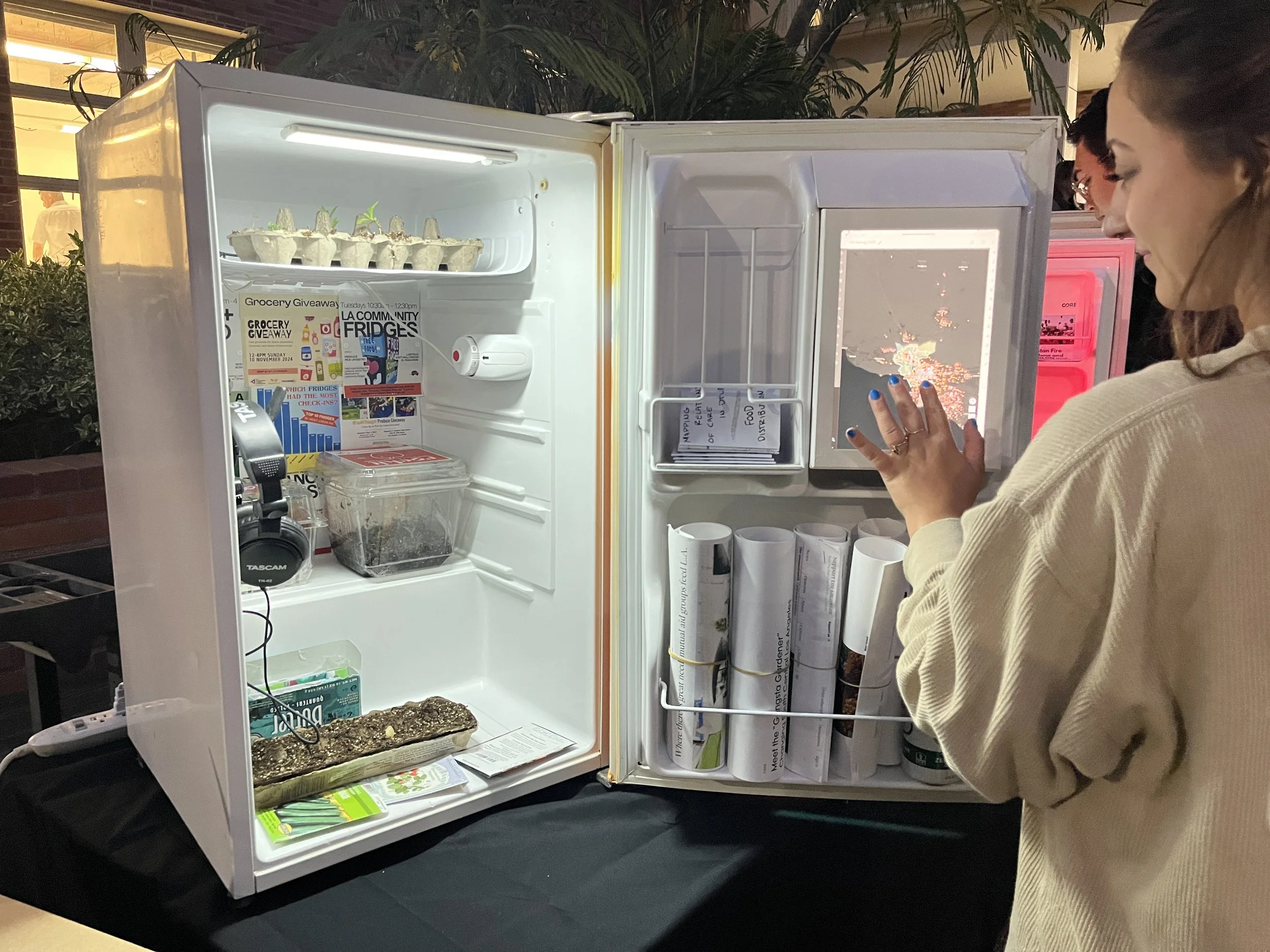


Our installation explores how community-led mutual aid networks in Downtown Los Angeles sustain life where formal systems fail, particularly during times of crisis (e.g., wildfires, extreme heat, and food insecurity). At the heart of this project, we highlight the labor of care practiced by grassroots organizers, centering Polo’s Pantry, the Peace and Healing Center, Skid Row community hubs, and People’s Market.
Drawing from interviews, maps, zines, video, and sound scavenging, our installation traces how migrants, unhoused individuals, and low-income residents have a history of caring for one another through systems of support that are fast, flexible, and grounded in deep, nurtured relationships fostered through day-to-day interactions. This work is a part of a history, an archive, of care and resistance rooted in kinship, trust, and the rhythms of daily life.
Move through layered ecologies and witness the intimacy of organizing.
Listen to the DTLA voices; hear the rhythm of the LA river; plant seeds; read wet paper. Interact with maps to learn about all resources made available by the communities of









